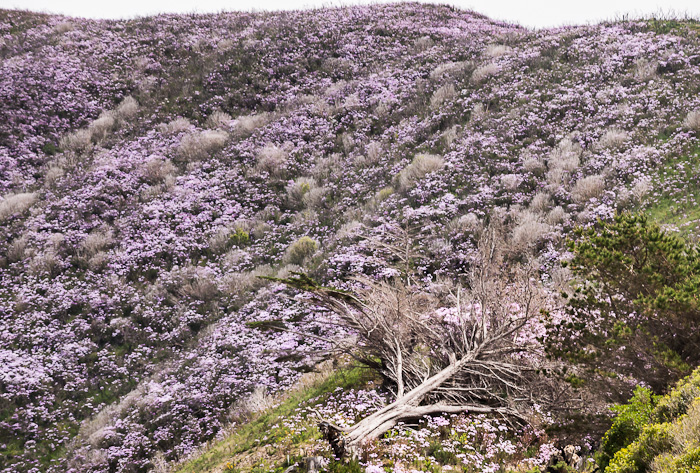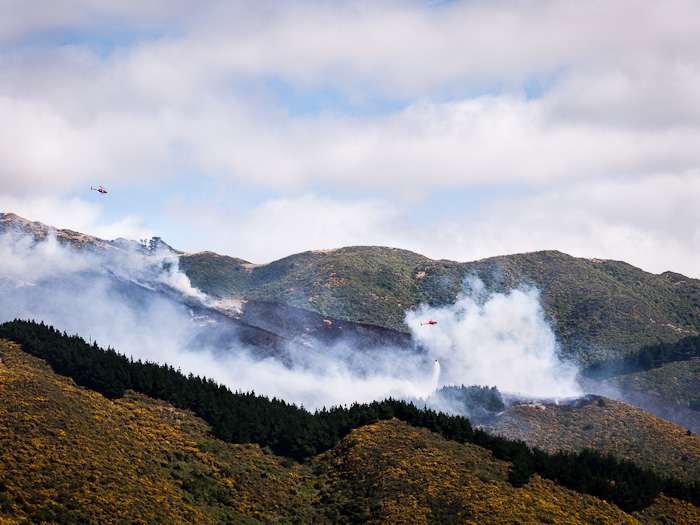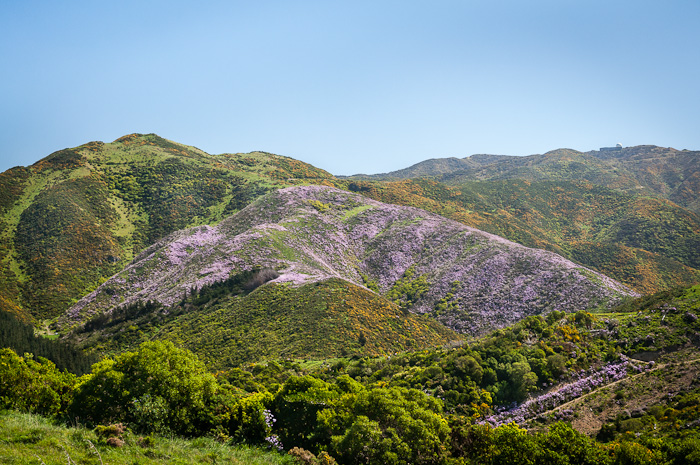The Cape Province is only a small area of South Africa but it has a wonderful range of endemic plants (plants found only there.) Many have been introduced and flourished elsewhere, one perhaps too well - Senecio glastifolius or pink ragwort, a pretty perennial daisy bush which appears on Wellington hillsides each spring in ribbons of purplish pink. It is bright and cheerful and the bees love it.

It took me a while to notice that it might appear profusely in one place for a year or two but then the show of pink would dwindle, only to spring up somewhere else. And that somewhere else would be another area of disturbed ground - a building site, a pathway, a place where trees had been cleared, and in this case a place where the shrubby cover had been burned in a scrub fire back in February 2013.
In the first spring after the fire I was expecting to see pink. No - just some green grass covering the soil. But now in October 2014, the second spring after the fire, there is a flourishing of pink particularly where the fire did the most damage.

A reminder of the fire near Owhiro Bay, on the Happy Valley hills.

And now, looking at the affected area but from further away (Tawatawa Ridge, on the city to sea walkway with a view across to the Happy Valley hills towards Te Kopahou) - a colourful if weedy view - pink ragwort and golden gorse, contrasting with the rich greens of native shrubs.

Both these weeds seem to be more problematic in other areas of New Zealand, but appear to be less overwhelming in windy Wellington where they provide shelter for native plants which then gradually take over. I know that is the case for prickly nitrogen fixing gorse - a formidable protective "nursery plant." And it appears that pink ragwort does not completely dominate for long. But even at home in South Africa it is said to be something of a pest because of the way it can take hold in disturbed ground. Being a successful plant unfortunately often also means being designated a "weed" - whether you have been introduced from afar or not.
If a weed is disrupting an ecosystem or displacing the plants that originated in a particular place, it seems reasonable to want to conserve and nurture the plants and ecosystems that are threatened. It is not always easy! But along the Tawatawa Ridge walk, you can see New Zealand shrubs and ferns growing amidst the thorny gorse and the purplish pink daisies of Senecio glastifolius.